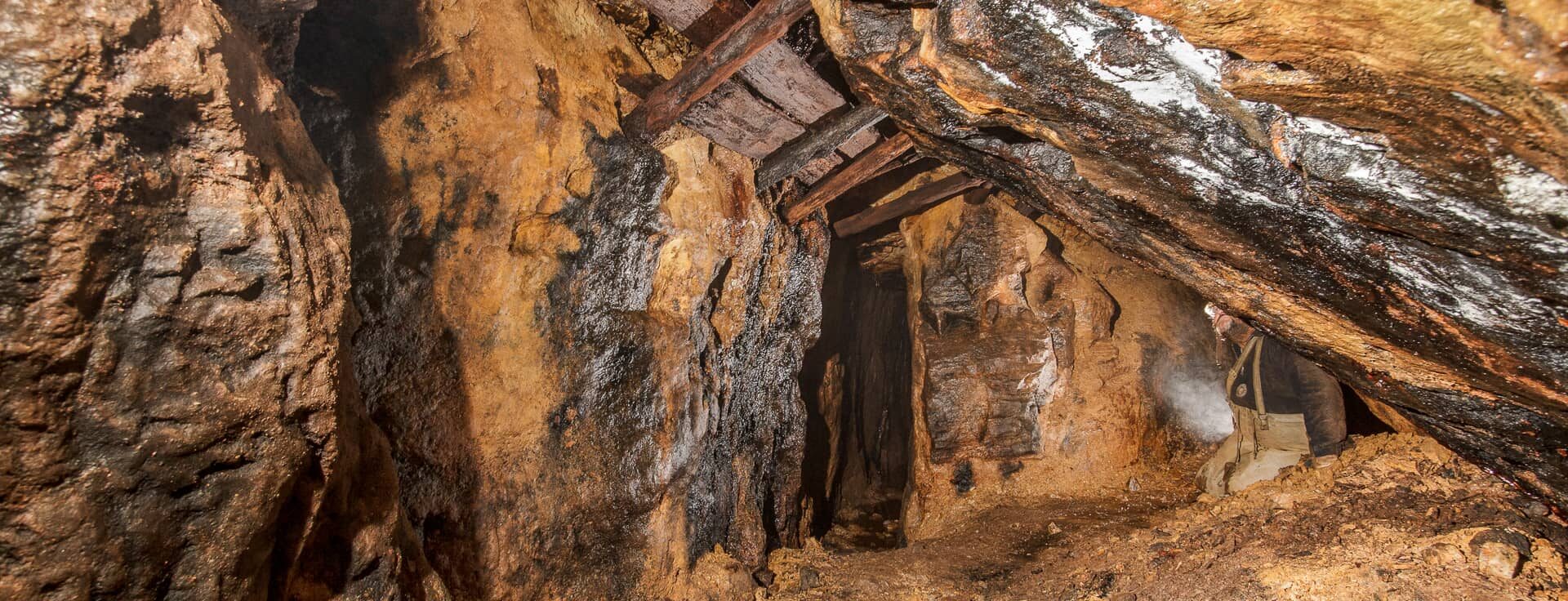Drei-Brüder-Schacht


Whoever contemplates the treasures of the Green Vault and the architectural wealth of Dresden should remember whence the Saxon state was able to get the funds required for this back in its day: mining, primarily for silver. Every gram of this precious metal, which was painstakingly extracted from the ground, could be converted into cash. Silver was the currency for centuries, the silver content of the coinage embodied the exchange value on the market. Since the 12th century, most likely even before that, every stone was being turned over across the entire Ore mountain range. As time went by, one had to search in ever greater depths and brave the problems associated with mining until one reached the limits of what was possible. However, technical and organisational innovations brought mining to new heights time and time again.
A typical example of this struggle can be found in the mining district to the south of Freiberg. Until the 19th century, numerous small mines consolidated into ever larger mining facilities with workforces that numbered in the triple digits. Projects were tackled together if they were to have any chance of success. For, as always, it meant investing without knowing for sure what the return would be. The miner rightly says: “It’s dark before the pick!”.
The two major mines between Freiberg and Brand-Erbisdorf, the “Beschert-Glück-Fundgrube” and the “Segen Gottes Herzog August” mines, decided in 1791 to tackle the increasing problem of mine drainage collectively. It was hoped that further ore deposits would be found in the greater depths accessible at that time. And so the “Drei-Brüder-Schacht” was built, whose technology was usually powered by water. The supply and disposal of the operating water was a challenge for the engineers and miners.
Finally, two huge water wheels rotated at a depth of more than 120 metres, which on the one hand operated the water pumps and on the other hand also the material transport to the surface.
Unfortunately, as is often the case, the hoped-for ore reserves did not materialise after the shaft was completed down to a depth of 390 metres. At the same time, at the end of the 19th century, the price of silver plummeted on the world market, because overseas the precious metal could be picked up practically from the ground without much effort. With the founding of the German Empire in 1871, gold replaced silver as the monetary metal. All in all, Saxony’s mining industry, especially Freiberg’s, was once again on the brink of unprofitability.
And once again, at the dawn of the new century, technical innovations raised hopes for the continuation of this branch of industry, which, with its upstream and downstream trades, was the breadwinner of an entire region. Powered mining could be the solution, and “electricity in the coalfield” would also be able to attract other industries to Freiberg. The idea of running a thermal power station on hard coal from Freital was quickly dismissed in view of the laboriously developed system for supplying water (artificially constructed channels and storage ponds as far as the upper Ore Mountains) and the water solution (with the completion of the Rothschönberg tunnel, which was built at a depth of approx. 270 m and was over 30 km long, in 1877). A hydroelectric power plant inside the mountain – the logical idea from today’s perspective, but immensely revolutionary – came into being.
The “Drei-Brüder-Schacht” which had been shut down in the meantime, was restored. A cavern was created just above the “Rothschönberger Stolln” to accommodate the turbines and generators. Ceremoniously commissioned on Christmas Eve 1914, “clean electricity” was generated underground. Together with its sibling power station in the Constantin shaft, the power station supplied up to 10 MVA to Freiberg’s public grid – this achievement could not save the mining industry itself, but it could save the region’s economy.
The power station operated until 1972. After it was shut down, the shaft lining fell into disrepair because its maintenance was also discontinued. The power plant facilities, both above and below ground, have been preserved in their original condition from 1914. The floods of 2002 demonstrated how important it is to preserve facilities such as the “Rothschönberger Stolln”, which is hidden from our view. Since the repair of the Drei-Brüder-Schacht, it now serves as the southernmost access for the maintenance of the tunnel.
The history is astonishing: the shaft was sunk to solve the problem of “water in the mountain”, was reactivated to open up new perspectives for the region with precisely this medium, and is being preserved to prevent water from becoming a problem for future generations.